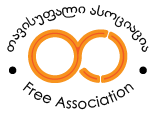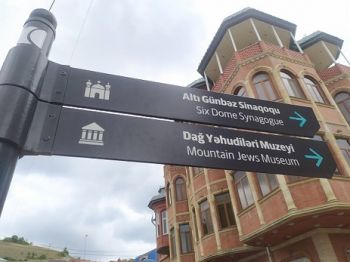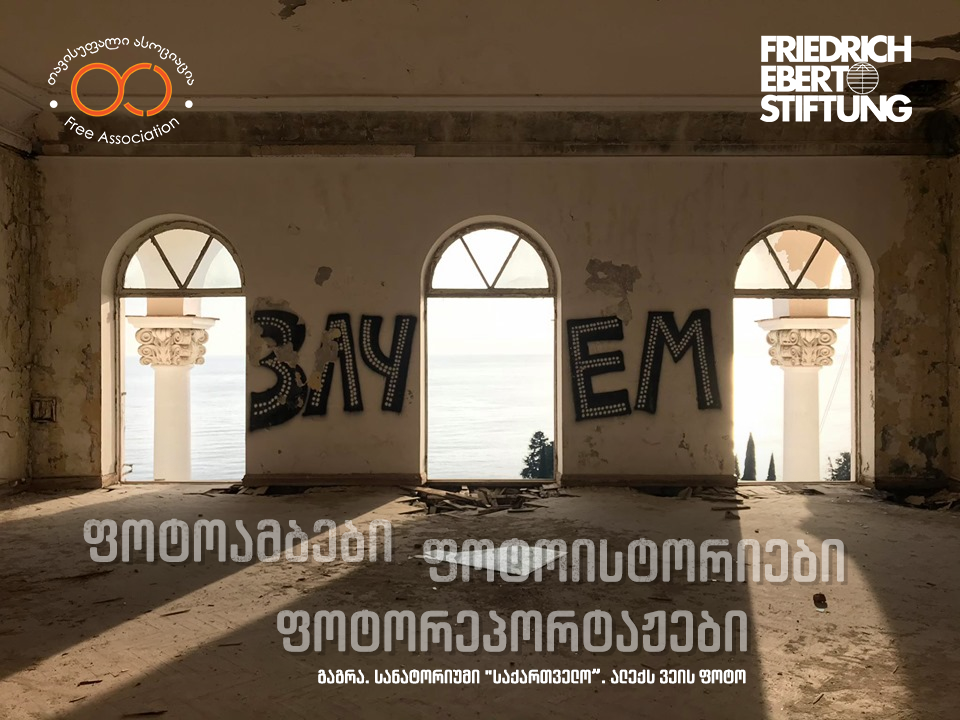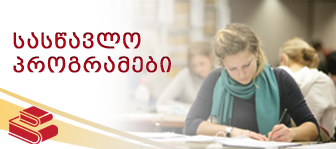აზერბაიჯანის მასშტაბით ახლა 20 000-ზე ცოტა მეტი მთის ებრაელი ცხოვრობს. მეორე მსოფლიო ომამადე მხოლოდ წითელ დასახლებაში 18 000-მდე იყო. დღეს უკვე ასეთი სტატისტიკით ვეღარ იამაყებს. ამის მიზეზი კი ებრაელების ემიგრაციაა ისტორიულ სამშობლო ისრაელში, აშშ-ში, ევროპაში. საბჭოთა კავშირის დაშლის შემდეგ 90-იანი წლების უმუშევრობა ამ დასახლებასაც შეეხო.
ისევე როგორც ბევრი, საბჭოთა კავშირის დაშლის შემდეგ 58 წლის იზრომ რუმინოვმა საკუთარი თავი სავაჭრო სფეროში მოსინჯა პერმში, მოსკოვში და ბევრ სხვა რუსულ ქალაქში. კაფეში მუშაობაც მოასწრო, თუმცა, ორი შვილის მამა ჯერ კიდევ საბჭოთა დროს მშობლიურ სოფელში სილამაზის სალონში მუშაობდა. რუსეთიდან დაბრუნების შემდეგ საკუთარ სოფელში კაფე გახსნა, რაშიც სარესტორნო ბიზნესში მიღებული გამოცდილება დაეხმარა. ახლა უკვე თანასოფლელებისა და სოფლის სტუმრებისთვის მთის ებრაელებისთვის დამახასიათებელ სხვადასხვა კერძს დედის რეცეპტების მიხედვით ამზადებს. იზრომი ამბობს, რომ ყველაზე პრეტენზიული მომხმარებელიც კი სიამოვნებით სინჯავს კერძებს:"ქათმის ხორცს წაბლსა და ხახვთან ერთად ვწვავთ, ზემოდან გათქვეფილ კვერცხს ვამატებთ, რომელსაც დღესასწაულებზე ფლავთან ერთად მიირთმევენ, ან მთის ებრაელების დოლმას ვამზადებთ, რაც კომბოსტოში გახვეული ხორცია. ალუბალს ვადუღებთ და კერძს ვამატებთ მაშინ, როცა უკვე თითქმის მზად არის,"- მომზადების პროცესს გურმანი აღწერს.
და აი, რა არის საინტერესო. პირველი - კერძი მომზადების წესით განსხვავდება იმისგან, რასაც მსოფლიოს სხვადასხვა კუთხეში ებრაელები აკეთებენ. მთის ებრაელები კერძში ძვლებს არ ტოვებენ. და მეორე - დოლმას ძალიან ჰგავს, თუმცა, აქვს თავისებურებები.
სამზარეულო არ არის ერთადერთი სფერო, რომლითაც მთის ებრაელები თავის თანატომელებს არ ჰგვანან და უფრო ახლოს მეზობელ აზერბაიჯანელებთან არიან.
განსხვავებულია ენაც, რომელიც ახლოს არის სპარსულთან და შერეულია ივრითი, მოიხსენებენ როგორც ჯურუს. და რაღა თქმა უნდა, მთის ებრაელებს თავისებური მენტალიტეტი აქვთ, განსხვავებული სხვა ებრალებისგან, უფრო კონსერვატიული, პატრიარქალურიც კი, რაც აზერბაიჯანის მოსახლეობის მენტალობასთან ახლოს არის.
მაგალითად, თუ ისრაელში ქალებს კაცებთან ერთად სინაგოგაში ლოცვა შეუძლიათ, წითელ დასახლებაში ამ ფორმას არ მიესალმებიან, ისევე როგორც, ახალგაზრდების თანამედროვე ჩაცმისა და გართობის სტილს. ალბათ, სწორედ ამიტომ, დასახლებაში სეირნობისას მარტივად მიხვდებით, ვინ არის ტურისტი, ვინ ახლობლების მოსანახულებლად ჩამოსული და ვინ ადგილობრივი. როგორ წესი, ტურისტები და ებრაელები მსოფლიოს სხვადასხვა კუთხიდან ზაფხულობით ჩამოდიან. ებრაელები, რომლებიც დასახლებაში არ ცხოვრობენ, ჩამოდიან გლოვის დღეებში სასაფლაოზე მიცვალებულების მოსახსენებლად, ეს სუკოტის დღესასწაულზე ხდება. ამ დროს მარტივად შესამჩნევია ქუჩებში ძვირადღირებული მანქანებით მოძრავი ახალგაზრდები. უნდა ითქვას, რომ გზა და მასზე მავალი ავტომობილები აზერბაიჯანის სხვა რეგიონებისა და სოფლების ინფრასტრუქტურისა და მანქანებისგან მკვეთრად განსხვავდება.
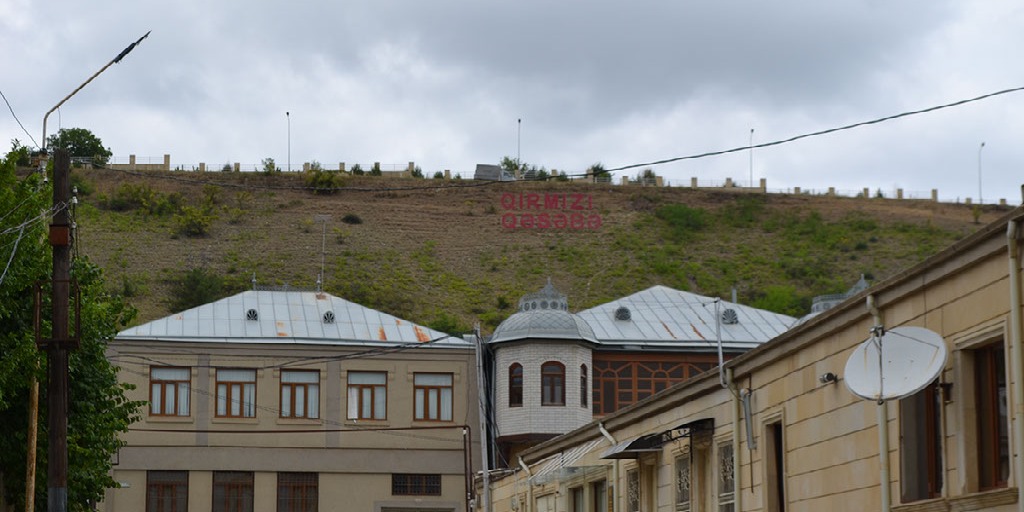
ახლა სხვადასხვა მონაცემით დასახლებაში 3000-მდე მოსახლეა დარეგისტრირებული, რეგულარულად უფრო ნაკლები ცხოვრობს. შრომისუნარიანი მოსახლეობა სეზონურად იმყოფება. სხვა დროს ძირითადად, ქუჩებში ხანდაზმულ ადამიანებს შემოხვდებით. მამაკაცები სხვადასხვა საკითხს ჩაის სახლებში განიხილავენ, ან ნარდითა და სხვა სამაგიდო თამაშით ერთობიან, მაგალითად, დასახლების თაღოვანი ხიდის მახლობად ჩაის სახლში. ქალები სახლის საქმეებით ან სხვა საზრუნავით არიან დაკავებულნი.
75 წლის მეზი ჰანანოსთვის ასეთ საქმედ ნათესავის საცხოვრებელი ფართის გაყიდვა ითვლება. ის დიდი სიამოვნებით მოუყვება პოტენციურ მყიდველს ორსართულიანი შენობის ისტორიას, რომელიც მე-19 საუკუნის ბოლოს ააგეს.
ჯანმრთელობის პრობლემების გამო სულ ფრო იშვიათად გამოდის ქუჩაში, მაგრამ არც თავის შვიდი შვილიდან რომელიმესთან უნდა წასვლა საზღვარგარეთ. ერთის მხრივ, ძალიან ენატრება შვილიშვილები, მეორეს მხრივ, დასახლების დატოვება არ უნდა: "აქ ბავშვობა, ახალგაზრდობა გავატარე, ახლა მოხუცებულობასაც ვატარებ".
ახალგაზრდები თანხის გამოსამუშავებლად ნათესავებთან საზღვარგარეთ მიდიან: ისრაელში, ამერიკაში და განსაკუთრებით რუსეთში. საინტერესოა, ის ფაქტიც, რომ რუსეთი ლიდერია იმ ქვეყნებს შორის, სადაც დასახლების ებრაელი ქალები თხოვდებიან. ეს იმით აიხსნება, რომ ახლაგაზრდა ებრაელებს ნათესავებისგან შორს ცხოვრება არ სურთ.
დასახლებაში მცხოვრები ხანდაზმულების თქმით, ტრადიციების ერთგული მთის ებრაელები ოჯახში კონსერვატიული პრინციპების, კულინარული შესაძლებლობის გამო სასურველები არიან როგორც პოტენციური ცოლები თავის თანატომელებში ამერიკიდან, რუსეთიდან და ისრაელიდან.
კონსერვატიული მიდგომა ყოფაში, ცხოვრების წესის თავისებურებები მთის ებრაელებს ხელს არ უშლით, აზერაიჯანის მოსახლეობასთან მეგობრული ურთიერთობა ჰქონდეთ, ძირითადად, გუბინის რაიონში, რომლის ადმინისტრაციულ-ტერიტორიული ერთეულიც არის წითელი დასახლება. ამის დადასტურებაა დასახლებაში გვერდიგვერდ მცხოვრები ებრაული და არაებრაული მოსახლეობა.
64 წლის ეიბუნ ალიმურადოვი წარმოშობით აზერბაიჯანელია, ბოლო 30 წელია ოჯახთან ერთად წითელ დასახლებაში ცხოვრობს. ორი შვილის მამამ ამ დროის მანძილზე მშენებლად და მებაღედაც იმუშავა. ამბობს, რომ ყველა მეგობრულად ცხოვრობს:"ჩვენ ერთმანეთის ქორწილებსა და დასაფლავებაზე მივდივართ. ყველას თავისი ცხოვრების წესი აქვს. აქ რომ ცუდად მეცხოვრა, დიდხანს არ გავჩერდებოდი".
ებრაული იდენტობის შესანარჩუნებლად წითელი დასახლების მაცხოვრებლებს ყველაფერი აქვთ: სინაგოგა, მიკვა (სულიერი განწმენდის ადგილი), რელიგიური სკოლა, მთის ებრაელების მუზეუმი, რაც მთავარია, ყოველმხრივი მხარდაჭერა, როგორც ქვეყნის შიგნით, ასევე, ქვეყნის გარეთ. ისღა დაგვრჩენია, დაველოდოთ, კავკასიის იერუსალიმის მაცხოვრებლების რაოდენობა როდის მიაღწევს ასი წლის წინანდელს.
In 160 kilometers from the capital of Azerbaijan, in the foothills of the side range of the Great Caucasus, Jerusalem of the Caucasus (red settlement) is located, which is one of the largest settlements of mountain Jews in the world.
There are now a more than 20,000 Mountain Jews living throughout Azerbaijan. Before the Second World War, only in the Red Settlement there were up to 18,000. Today, Azerbaijan can no longer be proud of such statistics. The reason for this is the emigration of Jews to their historical homeland, Israel, the USA, and Europe. After the collapse of the Soviet Union, unemployment in the 90s affected this settlement as well.
Like many, after the collapse of the Soviet Union, 58-year-old Izrom Ruminov tried himself at business in Perm, Moscow and many other Russian cities. He managed to work in a cafe, however, the father of two children returned to his native village and worked in a beauty salon. It was still the time of USSR. After arrival, he opened a cafe in his village, his experience in the restaurant business helped a lot. Now he prepares various dishes typical of mountain Jews for his fellow villagers and guests according to her mother's recipes. Izrom says that even the most picky customer is happy to try the dishes: "We roast chicken meat with chestnuts and onions, add a beaten egg on top, which is served with flava on holidays. Or we make mountain Jewish dolma, which is meat wrapped in cabbage. We boil the cherries and add them to the dish when it is almost ready," –this is how he describes the process.
And here's what's interesting. First, the dish is prepared in a different way from what Jews do in different parts of the world. Mountain Jews do not leave bones in the dish. And the second - it is very similar to dolma, however, it has its own characteristics.
Cooking is not the only area in which the Mountain Jews differ from their compatriots and are closer to their neighboring Azerbaijanis.
The language is also different. It is close to Persian and is mixed with Hebrew, referred as Juru. And of course, mountain Jews have a peculiar mentality, different from other Jews, more conservative, even patriarchal, which is close to the mentality of the population of Azerbaijan.
For example, if in Israel women can pray in the synagogue with men, in the Red Settlement this form is not welcomed, as well as the modern style of dressing and entertainment of young people. Perhaps, that is why, while walking in the settlement, you can easily understand who is a tourist, who has come to visit relatives, and who is a local. As a rule, tourists and Jews from different parts of the world come in summer. Jews who do not live in the settlement come to the cemetery on days of mourning to remember the dead, this happens on the holiday of Sukkot. At this time, it is easy to see young people driving expensive cars on the streets. It must be said that the road and the vehicles on it differ sharply from the infrastructure and vehicles of other regions and villages of Azerbaijan.
Now, according to various data, about 3,000 residents are registered in the settlement, regularly fewer live there. The labor population is there seasonally. At other times, you will mostly meet elderly people on the streets. Men discuss various issues in teahouses, or join together with backgammon and other board games, for example, in a teahouse near the settlement's arched bridge. Women are busy with housework or other buesines.
For 75-year-old Mezi Hanano, selling a relative's residential property is considered such a business. She is more than happy to tell a potential buyer the history of the two-story building, which was built in the late 19th century.
Due to health problems, she rarely goes out on the street, but she does not want to go abroad to any of her seven children. On the one hand, she misses his grandchildren very much, on the other hand, she does not want to leave the settlement: "I spent my childhood and youth here, and now I am also spending my old age here."
Young people go to relatives abroad to earn money: to Israel, America and especially Russia. The fact that Russia is the leader among the countries where Jewish women get married. This is explained by the fact that young Jews do not want to live far from their relatives.
According to the elders living in the settlement, the traditional Mountain Jews, because of their conservative principles in the family, culinary ability, are desirable as potential wives among their compatriots from America, Russia and Israel.
The conservative approach to living, lifestyle features do not prevent Mountain Jews from having friendly relations with the population of Azerbaijan, mainly in the Gubin district, of which administrative-territorial unit is the Red settlement. This is confirmed by the Jewish and non-Jewish population living side by side in the settlement.
64-year-old Eibun Alimuradov is originally from Azerbaijan, and has been living in Red settlement with his family for the past 30 years. During this time, the father of two children worked as a builder and a gardener. He says that everyone lives in friendship: "We go to each other's weddings and burials. Everyone has their own way of life. If I had a bad life here, I wouldn't stay for a long time."
Residents of the Red Settlement have everything to preserve their Jewish identity: a synagogue, a Mikvah, a religious school, a mountain Jewish museum, and most importantly, all-round support, both inside and outside the country. We just have to wait and see when the number of residents of the Caucasian Jerusalem will reach the number it was a hundred years ago.
